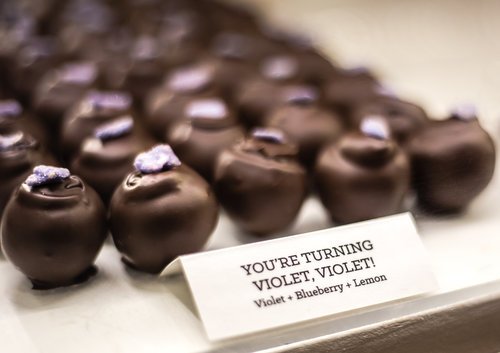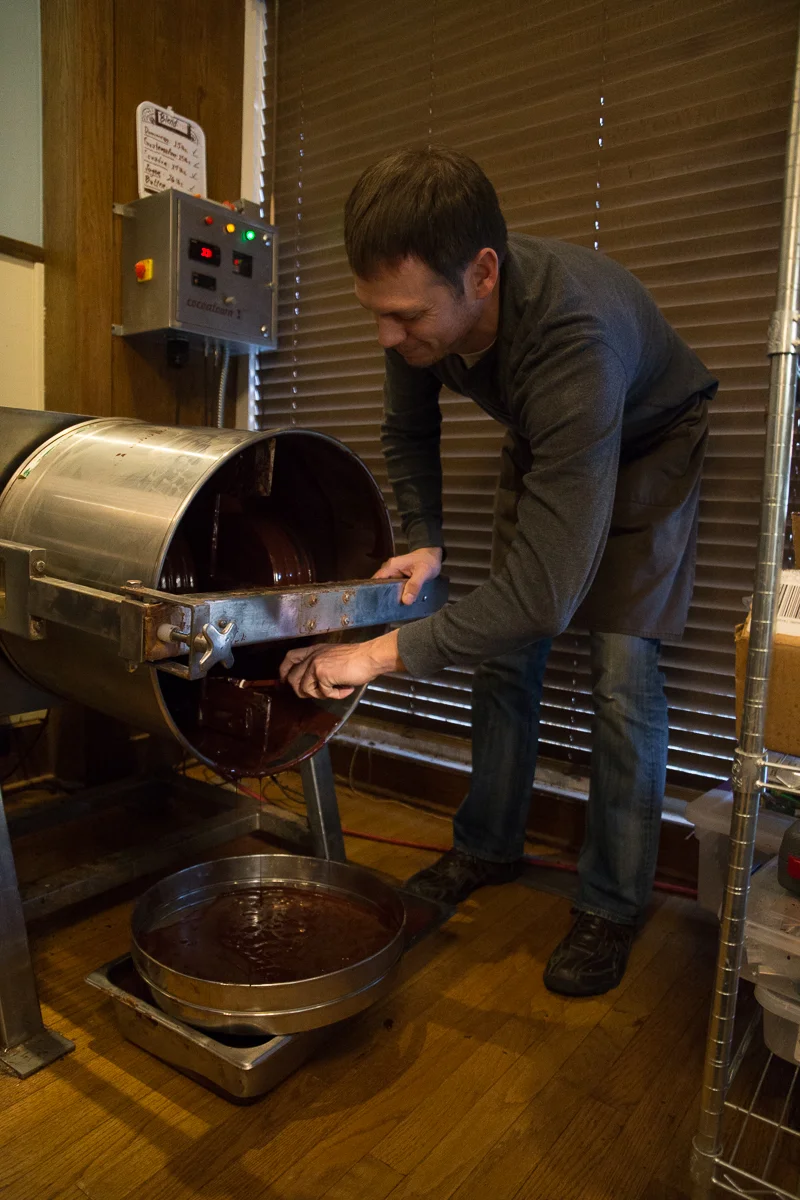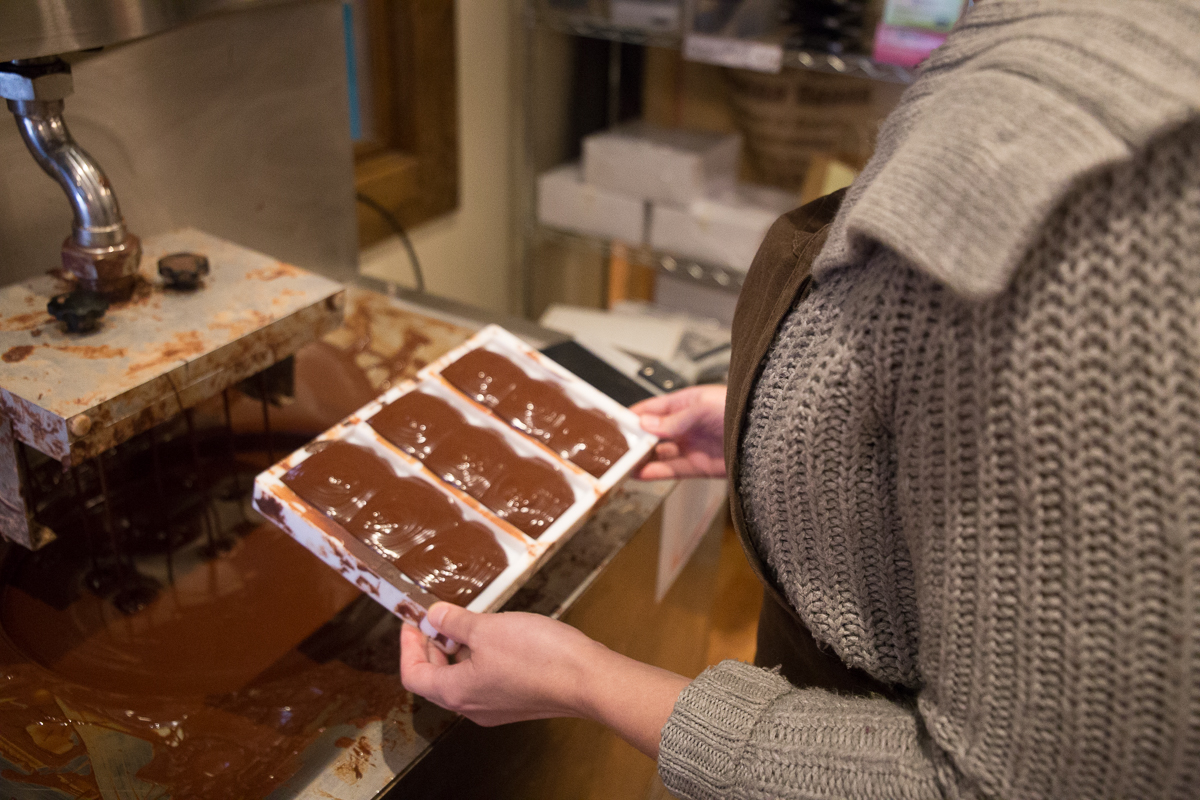OUR NEW PACKAGING IS BIODEGRADEABLE AND COMPOSTABLE!
A CHOCOLATE ADDICTION

We love food. We love creating it. We love eating it. And we love rolling up our sleeves to create everything from scratch—from our great bean to bar chocolates that are sold in specialty stores across the country to our pastries, cocktails and small plates in our cafe.
We want to reconnect people with real, authentic food—the joy of creating it, the joy of sharing it and the joy of savoring what whole foods can do for your mind and soul.
You don't need big beards to do that!
Food has a central place in our lives and we want to bring people together through food. This philosophy drives us and we don’t cut corners. We do things because they are hard, because no one else wants to do them that way. Our methods aren’t the fastest or the cheapest, but they make everything we do shine with taste and creativity.
We take chocolate back to a period when people didn't move quite so quickly and had the time to savor life, when food itself was an experience. It shows in our cafe when you watch your barista cut a fresh peach to muddle into your cocktail or when you watch our chocolatiers dip the truffle you're about to taste.
We started this business with a small amount of our own savings and built it into something we love and which we love to share—no big corporate sponsors or safety funds. Mary and Sara drive the design and flavors of the company which is reflected in the femininity of both.
In short, we took a leap into the unknown driven by our passion and we hope you take a leap with us!
Our approach is a rare commodity in this fast paced, hyper connected, mass produced world.
- Michael, Mary and Sara


















